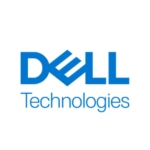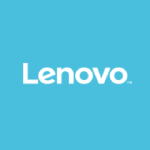What is our primary use case?
Our facility relies heavily on PowerEdge, spanning multiple generations. It is the foundation of our entire infrastructure, supporting a wide array of workloads, ranging from administrative tasks to private cloud and scientific computing. PowerEdge is a versatile and reliable platform that we can depend on.
How has it helped my organization?
PowerEdge has been a foundational part of our IT infrastructure, and its Fresh Air configuration saved us from disasters on multiple occasions. The solution's ability to survive extreme conditions has been invaluable, and its reliability has been astounding. We currently run three generations of PowerEdge in our data centers.
The solution offers remarkable flexibility, reliability, and extensive software support. PowerEdge is capable of running Microsoft private cloud, VMware private cloud, OpenStack, Linux distributions, and scientific workloads. The infrastructure is truly remarkable.
We can typically expect a 20 percent improvement in performance from Intel processors with each new generation, depending on the workload.
Utilizing the OpenManage capabilities of the platform is essential for us since we have a limited number of personnel to manage the PowerEdge that we possess. Thus, OpenManage's console productivity is invaluable for our IT staff.
The PowerEdge servers have proven to be invaluable in preventing up to 90 percent of unplanned production downtime. When other servers were failing due to extreme heat, PowerEdge was able to withstand the conditions and keep running. This made the solution an invaluable part of our operations.
The introduction of PowerEdge servers drastically increased the flexibility of our operations. We are leveraging the solution's capabilities for a wide range of applications and it is certainly the most versatile platform available to us. We deployed a variety of server models in different sizes, ranging from 1U to 2U and beyond, providing us with the flexibility to handle almost any task.
What is most valuable?
We are testing the latest PowerEdge from Dell for scientific workloads such as machine learning, deep learning, data analysis, and engineering simulation. We see excellent performance improvement and power consumption control. This is part of our Green Data Center project, where we take into account the “green” capabilities of the hardware we buy.
We are beginning to employ cyber-resilient architecture features. It is no longer just the platform security of the past that we take into consideration when making a new acquisition, but now we are also bearing in mind the security features on the server side due to the ever-evolving environment.
We found that the power consumption inside the BIOS of the latest PowerEdge has been significantly improved. The power control capabilities are now much more precise and the iDRAC tool that allows external programs to control the system's power consumption is also much more detailed than its predecessor.
We have been utilizing OpenManage for many years as beta testers, and our experience with OpenManage has been overwhelmingly positive. Dell OpenManage console is incredibly user-friendly and has made our lives significantly easier.
What needs improvement?
I would like to have additional HPC and AI capabilities on general Dell PowerEdge servers. To optimize the PowerEdge for HPC and AI, modified designs may be necessary.
Buyer's Guide
Dell PowerEdge M
August 2025
Learn what your peers think about Dell PowerEdge M. Get advice and tips from experienced pros sharing their opinions. Updated: August 2025.
865,384 professionals have used our research since 2012.
For how long have I used the solution?
I have been using Dell PowerEdge .Next for two months.
What do I think about the stability of the solution?
The stability and power consumption of Dell PowerEdge .Next are incredibly impressive. We have been running a single unit 24 hours a day for a month, primarily to test its stability and understand the power consumption control capabilities, and it exceeded expectations. Compared to the previous PowerEdge models, the stability and power management of .Next are remarkable.
What do I think about the scalability of the solution?
There are no issues with the scalability. Up to now, I haven't been able to identify any drawbacks of the platform I'm using.
How are customer service and support?
Dell's technical support is perfect and one of the reasons we buy their solutions.
How would you rate customer service and support?
What was our ROI?
We see a return on investment. The performance of the platform, which we tested on virtualization platforms such as VMware, is very impressive. PCIe 5 has made great improvements in communication and storage. Depending on what we can afford, Intel Scalable Architecture CPUs are more powerful than ever before.
What's my experience with pricing, setup cost, and licensing?
The pricing of Dell PowerEdge .Next has changed drastically due to the introduction of the latest technologies such as PCIe 5, DDR5, and the next generation of CPUs. This caused the prices of CPUs, DRAM, and PCIe cards to skyrocket. Consequently, it is difficult to compare the new pricing to what it was two years ago since the market has evolved significantly. The pricing of PowerEdge .Next is higher than it was before.
Which other solutions did I evaluate?
Our university is similar to a hardware supermarket, offering almost all brands of hardware, including Lenovo and HP. Although I have not had the opportunity to experience the newest HPE ProLiant 11 machines, I can say that PowerEdge is more reliable, more customizable, and has better management compared to other brands. The iDRAC capabilities, with its easy-to-use remote management, integrate seamlessly with OpenManage. When we purchase a PowerEdge server, we don't need to worry about hidden or additional costs for the management. As for the future, this remains to be seen.
What other advice do I have?
I give Dell PowerEdge .Next a ten out of ten.
We have been testing the latest generation of Dell PowerEdge systems in our data center for the past couple of months, in addition to the generations already in production.
Since 2016, our data center experience has been excellent, with very few hardware issues, including machines that still run from that year.
In our PowerEdge servers, we predominantly use Intel Xeon scalable processors of various generations, with AMD processors making up the remaining 10 percent.
We see a lot of improvement over the generations of PowerEdge. I must admit that while there is plenty of competition, the difference is remarkable. Enhancing PowerEdge is no easy task, yet Dell Technologies took great strides to incorporate customer feedback. The platform grew in flexibility, such as the range of disks available, the evolving iDRAC features to meet customer needs, and so much more.
We host a substantial infrastructure at the University. While we utilize public cloud services such as Microsoft 365 and Google Meets, we do not use them for computing, engineering simulations, or any internal services. All of our services are kept in-house.
The PowerEdge .Next platform is more than just its CPU, it encompasses all the solution's features, from the iDRAC to the next-generation RAID controller, which is 20 to 30 percent faster than the previous generation. Furthermore, Dell PowerEdge .Next's new architecture helps to drive the entire platform, making its performance even more impressive.
Which deployment model are you using for this solution?
On-premises
Disclosure: PeerSpot contacted the reviewer to collect the review and to validate authenticity. The reviewer was referred by the vendor, but the review is not subject to editing or approval by the vendor.












